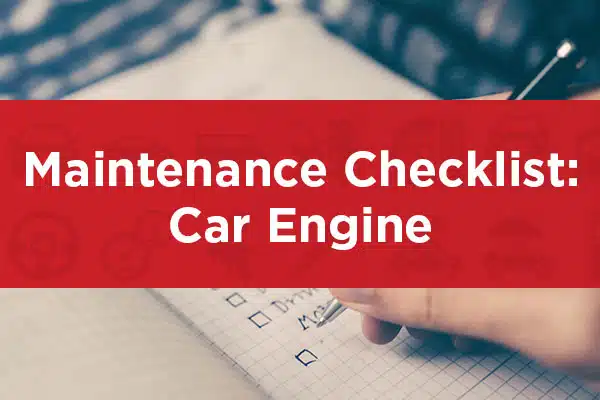Car Engine Maintenance Checklist: 5 Steps to Longevity
As a car owner, you rely on your vehicle to get you from point A to point B. Whether it’s for daily commuting, running errands, or embarking on road trips, your car’s engine works tirelessly to power your journeys. However, like any complex machinery, car engines require regular maintenance to keep them running smoothly and efficiently. By following a preventative maintenance checklist, drivers can avoid costly repairs and have greater peace of mind on the open road. Here is our car engine maintenance checklist to get you started:
Car Engine Maintenance Checklist
Step 1: Oil and Filter Change
To keep the engine well lubricated and clean, it’s best to have your car’s oil and oil filters inspected and changed per manufacturer specifications. This prevents excess wear, friction, and corrosion inside the engine.
If neglected, oil becomes dirty and breaks down over time. And without a clean filter, thick sludge builds up that blocks vital passages in the engine, which can lead to overheating and poor performance.
Be sure to use the appropriate type of oil—such as synthetic or conventional—and [atc] Auto Center generally recommends changing the oil every 3,000 to 5,000 miles or in accordance with the manufacturer’s guidelines.
Step 2: Inspect and Replace Spark Plugs
Spark plugs are a necessary component in the ignition process, and over time, spark plugs can become faulty—leading to misfires, decreased power, and increased fuel consumption. Replacing your car’s spark plugs (which [atc] Auto Center suggests inspecting and potentially replacing every 30,000 miles) can help improve fuel economy, reduce emissions, and ensure smooth engine startup and operation.
Step 3: Inspect and Replace the Air Filter
A clean air filter allows the engine to “breathe” properly, maintaining optimum air-to-fuel ratios. Over time, dirt and debris clog the air filter and restrict airflow which reduces fuel efficiency. We suggest inspecting your car’s air filter every 12,000 to 15,000 miles and having it replaced if necessary.
Some air filters may be reusable if adequately cleaned, while others are disposable and must be replaced. Clean air filters help reduce strain on engines and prolong the life of vital engine components.
Step 4: Check and Maintain the Cooling System
Regularly checking coolant levels ensures proper cooling system function, which is critical to your vehicle’s longevity. If neglected, coolant can become contaminated and lose its effectiveness, which can lead to engine overheating, coolant leakage, and damage to the radiator.
We recommend replacing coolant levels every 30,000 miles and flushing the system every 60,000 miles to ensure correct coolant-to-water ratios and optimum engine performance.
Step 5: Timing Belt Replacement
The timing belt synchronizes the rotation of the engine’s crankshaft and camshaft, which is crucial for proper valve timing and engine efficiency. Throughout a vehicle’s lifetime, the timing belt can wear down or become damaged, increasing the risk of belt failure. A timing belt failure can cause serious damage to the engine and potentially leave you stranded on the roadside.
Timing belt replacement intervals vary a bit depending on the vehicle’s make and model, but [atc] Auto Center recommends replacing your timing belt every 60,000 to 100,000 miles.
An Easy Car Engine Maintenance Checklist in Summary
As outlined, proper maintenance is essential for preserving your vehicle’s longevity and maximizing engine performance. Following a car engine maintenance checklist can help prevent costly repairs and greatly extend the life of your vehicle’s engine and other parts.
Investing the time and effort into proper care for your vehicle is a small price to pay for the peace of mind it brings. Schedule an appointment at [atc] Auto Center today at either of our locations in Augusta or Grovetown, GA. We service all makes and models!

